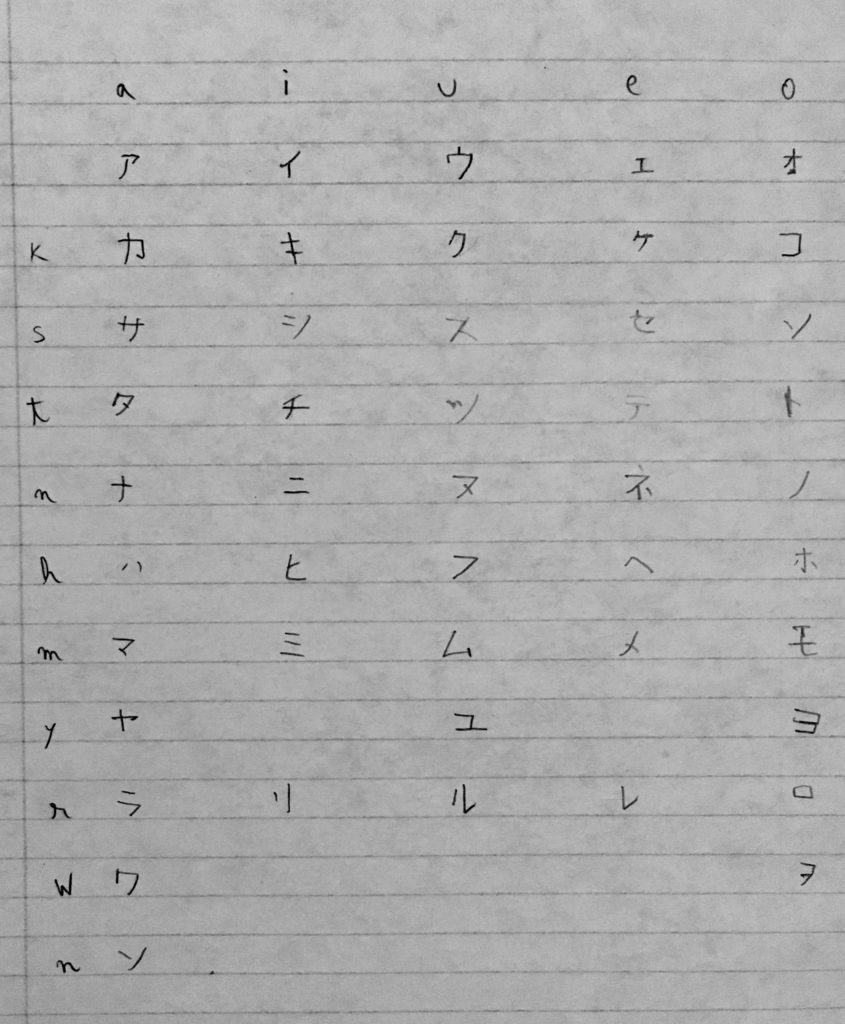It’s over…50 000?! Anime, kanji, and learning Japanese.

Since we’re still on the language topic, let’s talk a bit about my experience learning Japanese. Before meeting Kokoro, my only interactions with the language were through anime and video games.
I still vividly remember playing Virtua Fighter 2 as a child and hearing the characters’ Japanese lines. My 5-year-old mind was in awe – what could they possibly be saying? I still remember, my favourite character was a ninja (duh, I was 5) named Kage Maru who would say ‘amai’ after some of his victories.
(Do you know how shocked I was, years later, when I found out that his name was not actually pronounced ‘cage’? At least I felt better when I learned that Kage means ‘shadow’.)
It wasn’t all so bad and embarrassing though; it turns out I could make out most lines quite accurately, but still had no idea what they meant until the Internet came around to save the day with some translations. But then, in came another problem, and my first big ‘language shock’.
As Kokoro likes to remind me all so often, the Japanese we hear in video games or anime is not always (or ever) useful in everyday conversations. Real people don’t actually speak like Overwatch and Virtua Fighter characters, nor as Goku and Naruto. Shocking, I know.
So, when I actually sat down to begin learning ‘actual’ Japanese, I had to forget the (very) little I knew and start from scratch. No more ‘omae wa mou shindeiru’, ‘ryu jin no ken wo kurae’, or ‘genki dama’. And oh boy, what an adventure it has been since.
I already knew that there were three different alphabet systems/scripts I had to power through, but it had never hit me that there were THOUSANDS of characters you had to learn.

Hiragana and katakana? No problem! 46 characters each, learn a whole bunch per day, easy game! I’m making progress! Progress? ‘That’s cute’, whispered the kanji from the next chapter of my textbook.
There are somewhere over 50 000 kanji out there and, if that’s not enough, each of them can be read in several different ways.
Take 中 for example: one of the first kanji you learn. It can be read as ‘naka’, ‘chu’, or ‘jyu’, as it all depends on the other kanji it is paired with. On its own, it can mean ‘inside’, ‘middle’ or ‘centre’, but of course once you add other characters, that changes completely. Now do that times 50 000 and good luck!
In Japan, by the time you finish middle school, you are expected to know a little over 2000 kanji, but that’s over the course of, you know, more or less 9 years of school, and living in a country where you will speak and read Japanese everywhere. Now, imagine trying to learn that on your own, in a few months or years…
I should also mention that the three scripts can be mixed together, just to add an extra layer or two of difficulty. When I first started learning, I had to turn all the kanji into hiragana so that I could actually read sentences…
Now hold on. As much as this sounds as me complaining or finding excuses, I actually very much enjoy the learning process. It’s one of those things that takes a while to improve, but when you do, it also feels incredibly fulfilling and rewarding.
Whenever I sit with Kokoro’s family or friends and I can understand glimpses of a conversation, or I can answer something on my own, I know it’s all worth it.
Oh, but one last thing. Remember when I said anime Japanese =/= real-life Japanese? Well, after all this learning, I can’t say that I can understand anime so much better!!! Why? Because the Japanese you hear in anime is not what the one you read in textbooks…
There are several layers of politeness that you need to learn, and use based on the status of the person you are talking to (i.e. friends, colleagues, work superiors, strangers, family members, etc.). Textbook learning usually teaches you the more polite aspects, but not the utmost polite phrasings, but also not the casual version, but……….You get the point.

At least verbs don’t conjugate for each person? And there are no plurals? But then again, there are at least 5 different ways to just say ‘I’ depending on the context you’re in or how old you are?
For someone who loves to learn new languages, it’s an absolutely enticing process. I have some experience with language learning, both because I enjoy it and was forced into it due to my studies/work, but Japanese has been unique in so many ways. It’s the first time I can’t rely on any of the other languages I’ve studied for help with vocabulary, syntax, or pretty much anything else.
That’s probably why the results feel even more rewarding, or as Kage Maru would say: ‘amai’ [sweet].